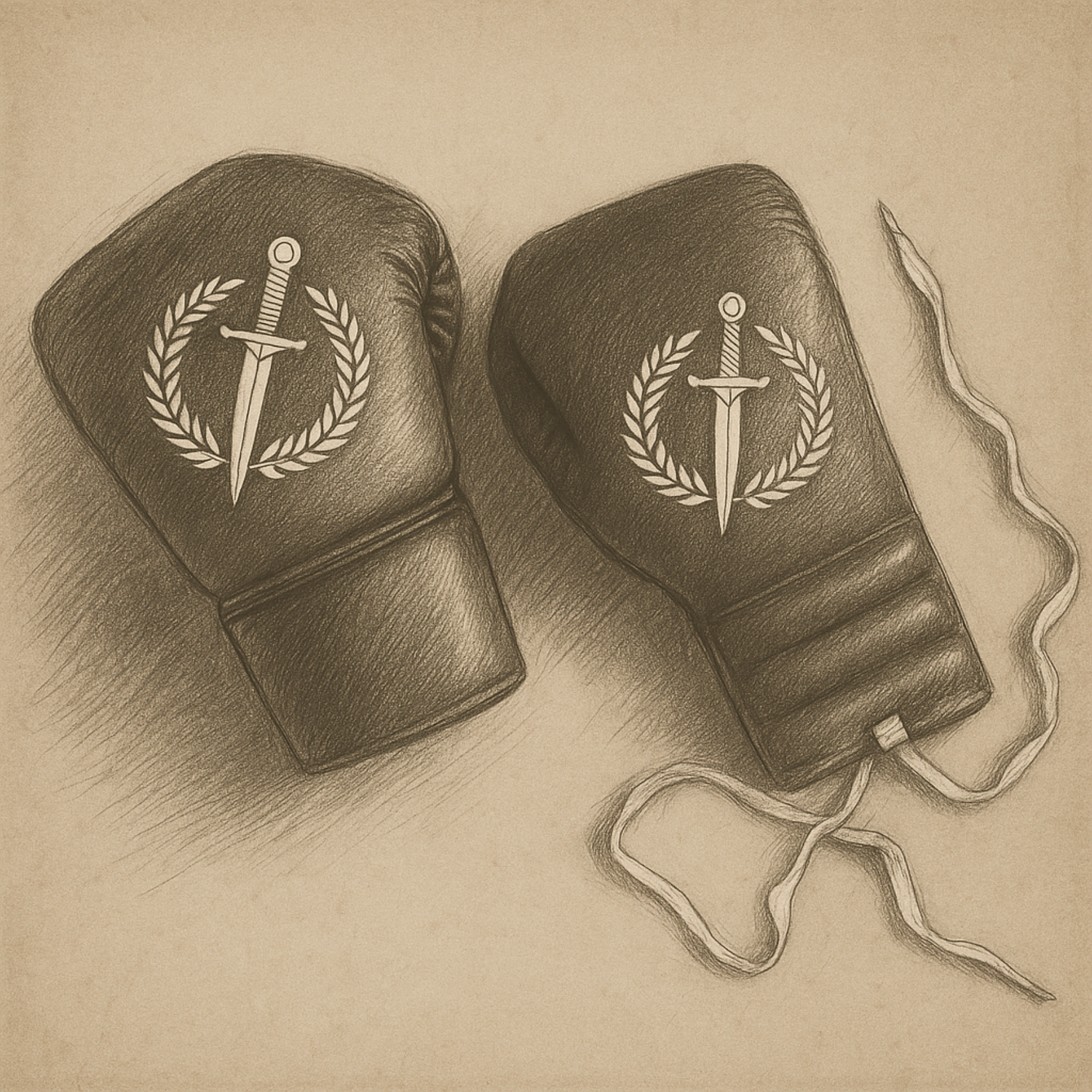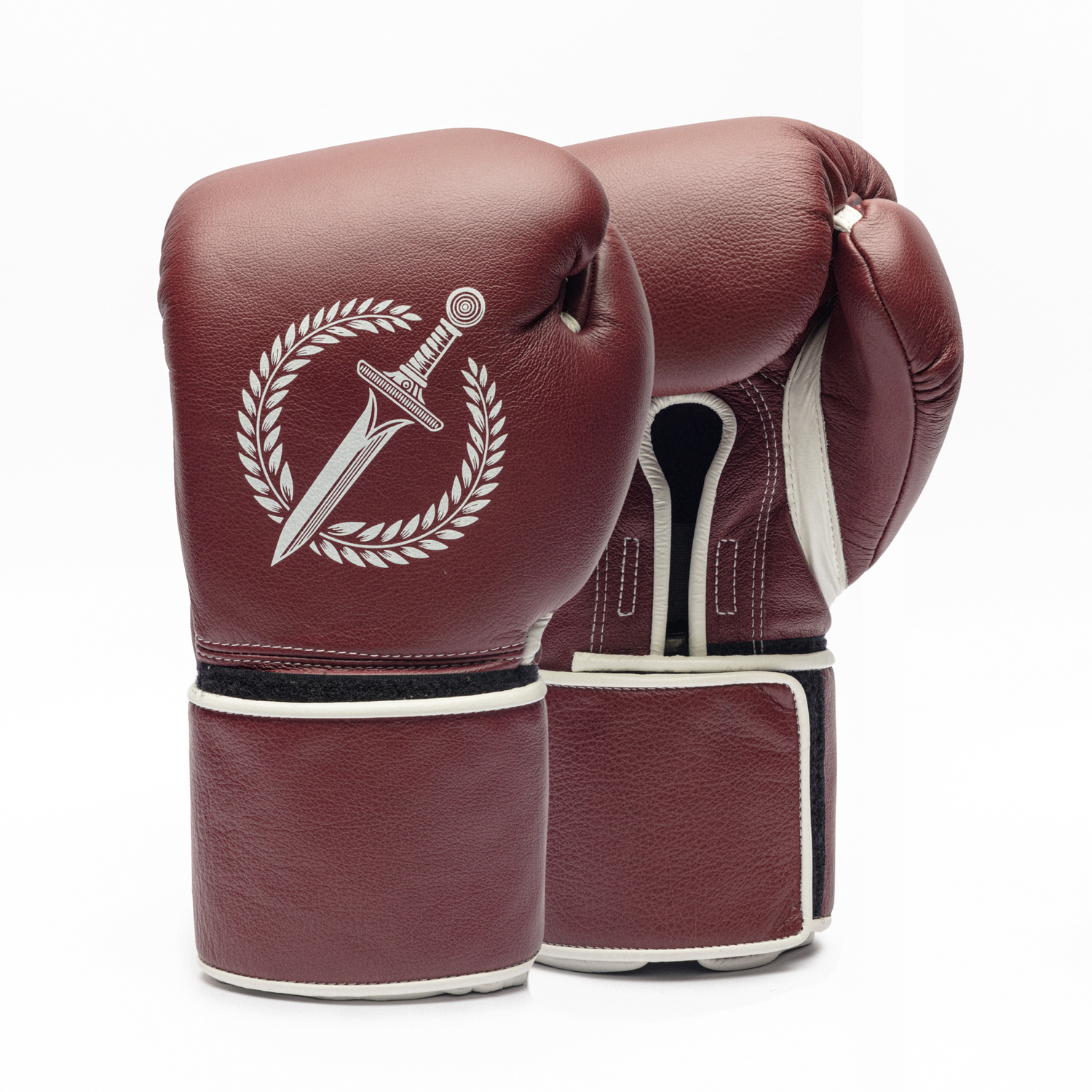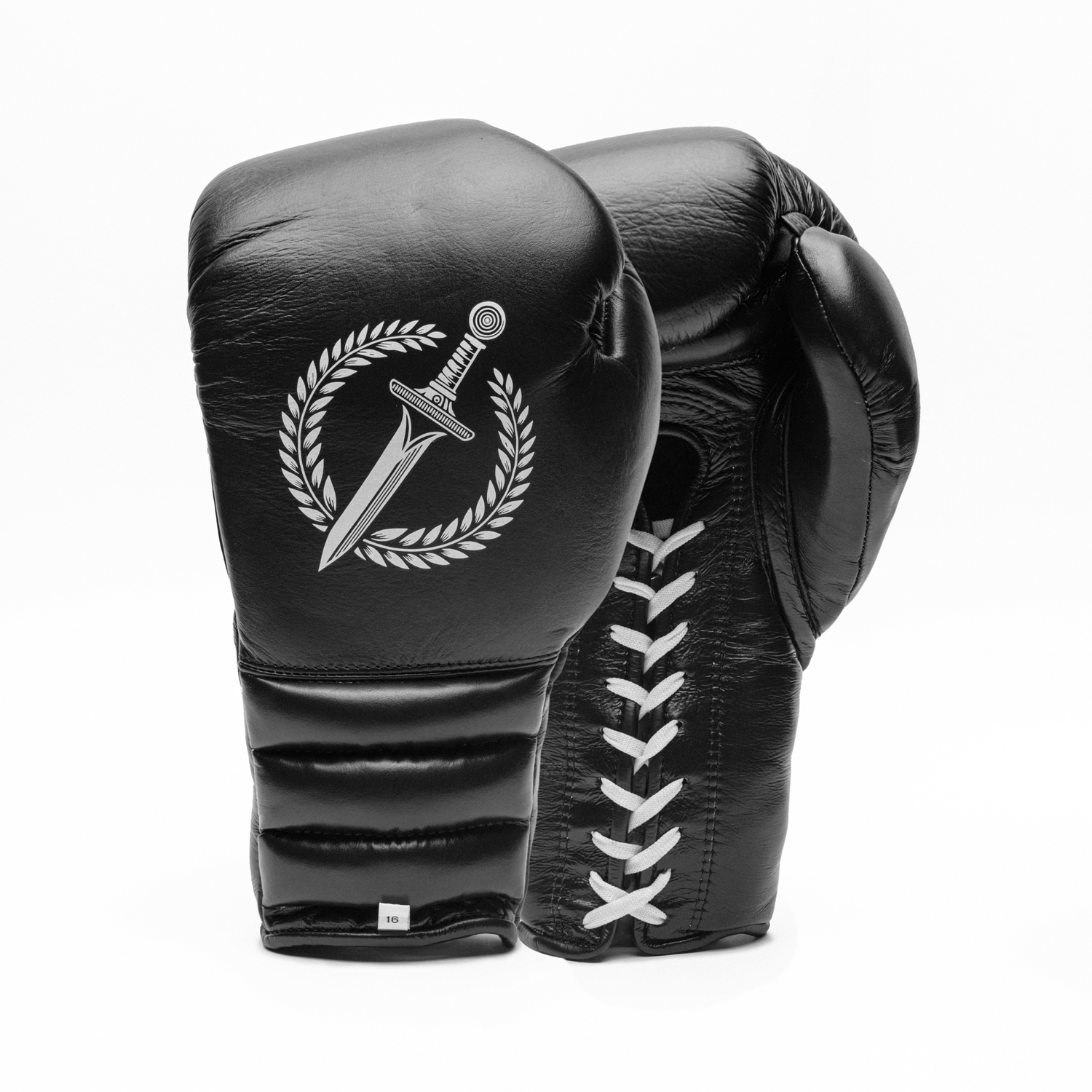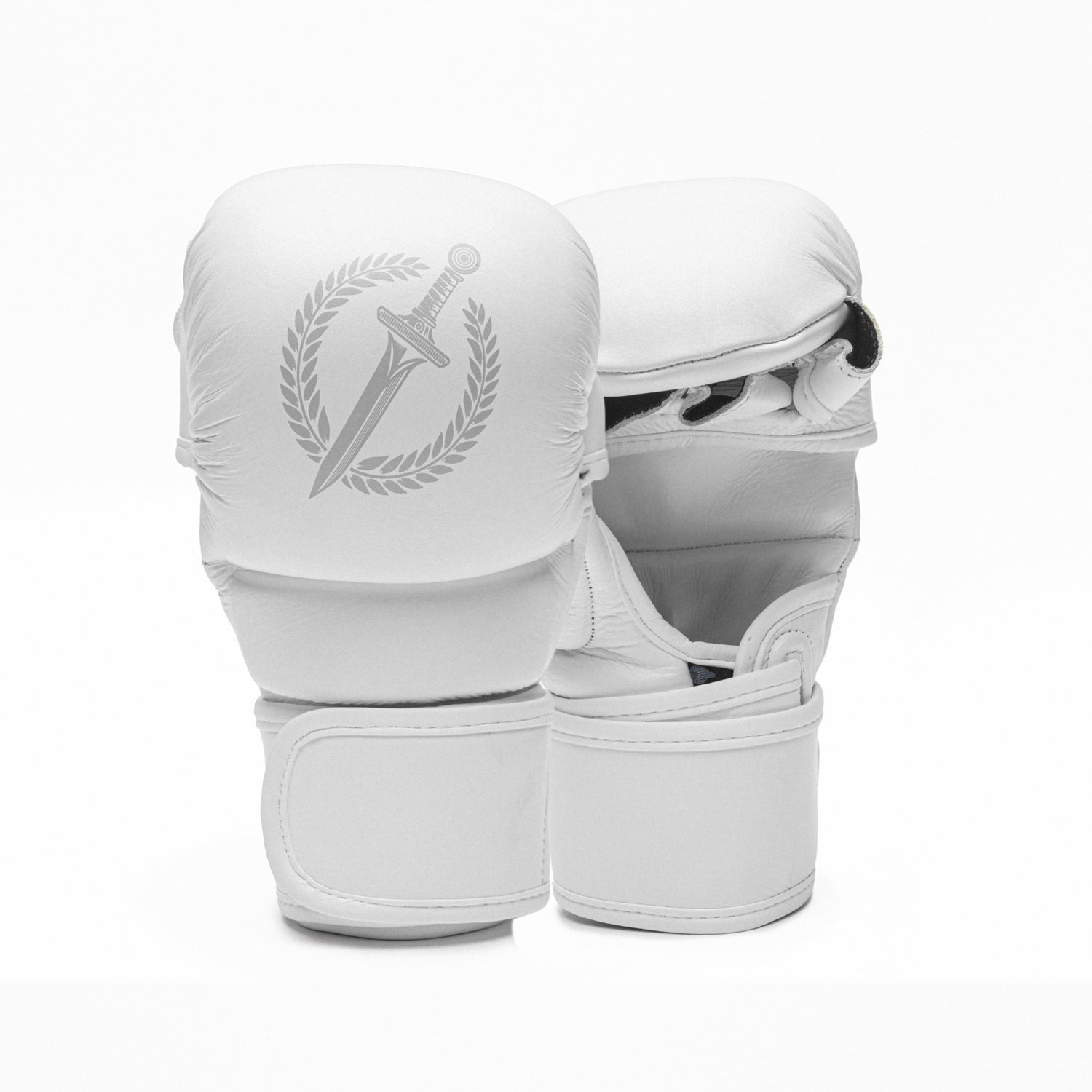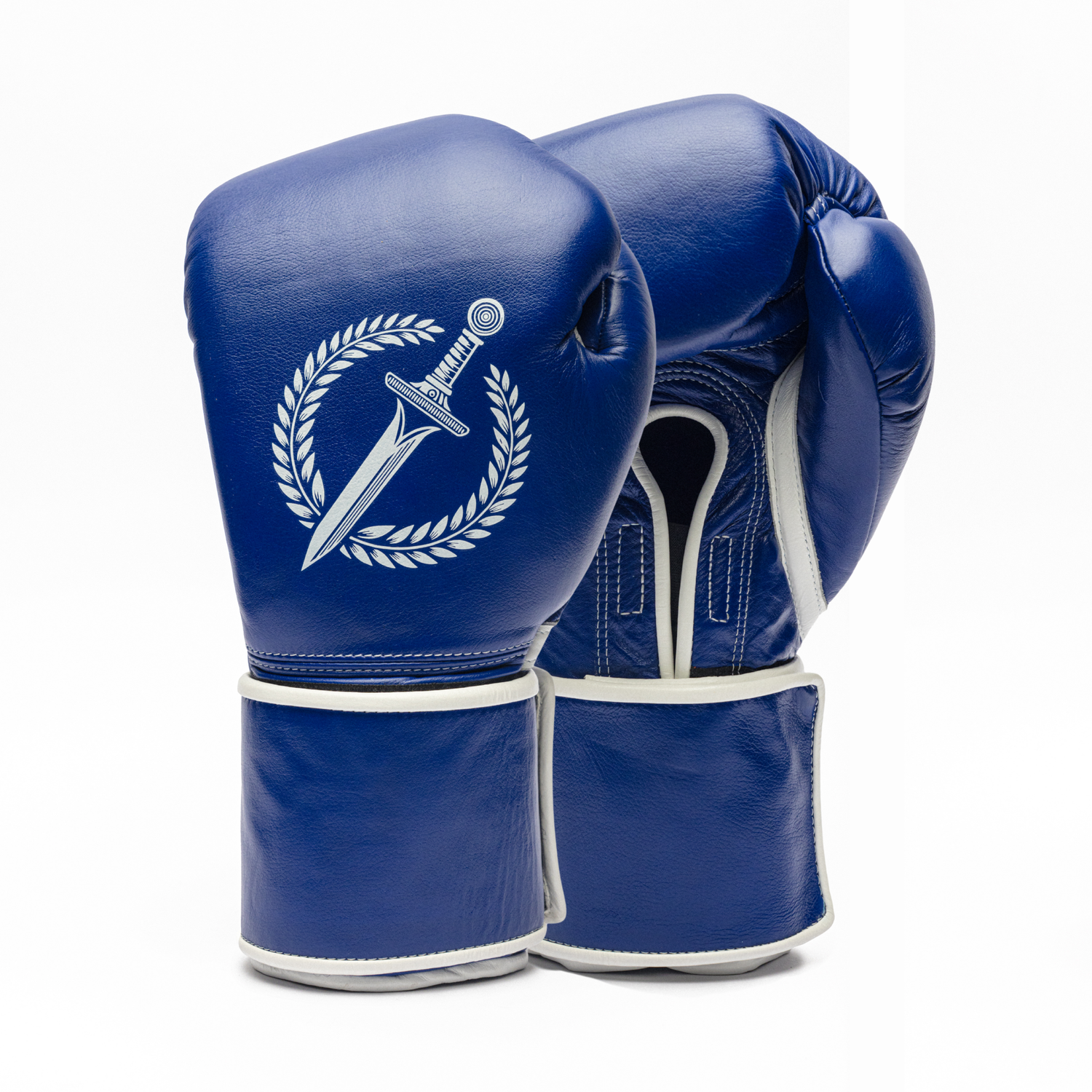Have you ever wondered what the difference is between the gloves fighters wear under the bright lights on fight night and the pairs they use during regular training?
In this article, we’ll cover the key differences between both types and help you determine which is right for your needs.

Owning a professional boxing gloves sounds tempting, but you most likely will be better off with a training glove.
In a nutshell: Short-lived damage vs. long-lived protection
The difference is big and easy to notice. One is for damage, the other is for endurance and safety.
- Professional fight gloves are designed to deliver the maximum amount of damage to the opponent.
- Training gloves are built to protect both training partners and the fighter's hands during long sessions and multiple types of exercises.
Because of these contrasting purposes, the materials, padding and other design details vary significantly between them, resulting in clear, noticeable differences to how they feel and perform.
Professional Gloves: Made to punish your opponent
Professional fight gloves must make your opponent feel every punch thrown. Therefore, they are designed to fit more snugly and offer less padding over the knuckles, many even let you feel your knuckles against the leather.
Overall, they are a horse of one race: great for fight night, but shouldn't be used for consistent training.
-
Purpose: To inflict maximum damage while complying with glove weight regulations and providing just enough hand protection for fight night.
-
Typical weight: 8oz for lighter fighters (up to welterweight) and 10oz for heavier fighters (super welterweight upwards). They have precise weight requirements with no deviation allowed by commissions.
-
Padding type: Varies by fighter preference and bout agreements, usually a blend of foam and horsehair or a thin layer of foam.
-
Durability: Very short-lived. Designed for fight night and little else, most do not last more than a year.
-
Additional commentary: These gloves give excellent punch feedback, but it comes at the price of heightened risk of hand injury. They should only be used in competitive bouts or specific training sessions leading up to a fight.

Professional fight gloves are appropriate for fight night only.
Training gloves: Made to endure all types of exercises
Training gloves are designed to withstand all types of exercises. The added padding and structure offers more wrist stability, hand protection and partner safety.
Even professional fighters use training gloves for their daily gym sessions. This lets them train longer and helps prevent hand injuries or discomfort that could compromise their performance. Most switch to professional gloves only during the final days of camp.
-
Purpose: To help fighters train without risking hand injuries or causing unnecessary damage to training partners. Designed to handle a variety of training scenarios, including bag work, mitts, moderate sparring, and drills.
- Typical weight: 10oz to 16oz.
-
Padding type: Often made with multi-layered foam or IMF inserts. A few training gloves can also use horsehair, although it is rare.
-
Durability: Varies by brand quality, glove care and frequency of use. A high-quality well maintained glove can last 4-5 years of consistent training.
-
Additional commentary: Training gloves are more resistant and have bulkier, layered padding compared to professional gloves. They offer better hand protection, more safety for partners, and greater longevity, making them the preferred choice for most training.

Should you have both?
No. Unless you are a professional fighter preparing for a bout, you won't need a professional fight glove.
-
Coaches do not allow fighters to spar with professional gloves. It is too risky.
-
Professional gloves can cause hand pain during drills or heavy bag work.
- Everything you can do with a professional glove can also be accomplished with a training glove. It is safer and better.
Exception: Professional fighters may benefit from having a pair with the same padding as their fight-night gloves to get used to the feel before a bout.

What about brands selling "Professional" gloves on retail?
Be cautious: most “professional” gloves sold at retail are not identical to fight-night gloves. They are often “professional-quality” gloves that mimic the craftsmanship of true professional gloves, but with different padding suitable for training.
Some brands use “professional” to label their highest-quality training gloves. Always ask the manufacturer whether the gloves are true professional fight gloves (including padding and weight) or just professional-quality training models.
Does Gladius sell professional gloves?
Yes, but only through bespoke projects for professional fighters.
We do not sell fight-night gloves on our website to avoid confusion and ensure we meet our standards for safety and longevity. All gloves available for purchase from Gladius website and retail partners are training gloves.

